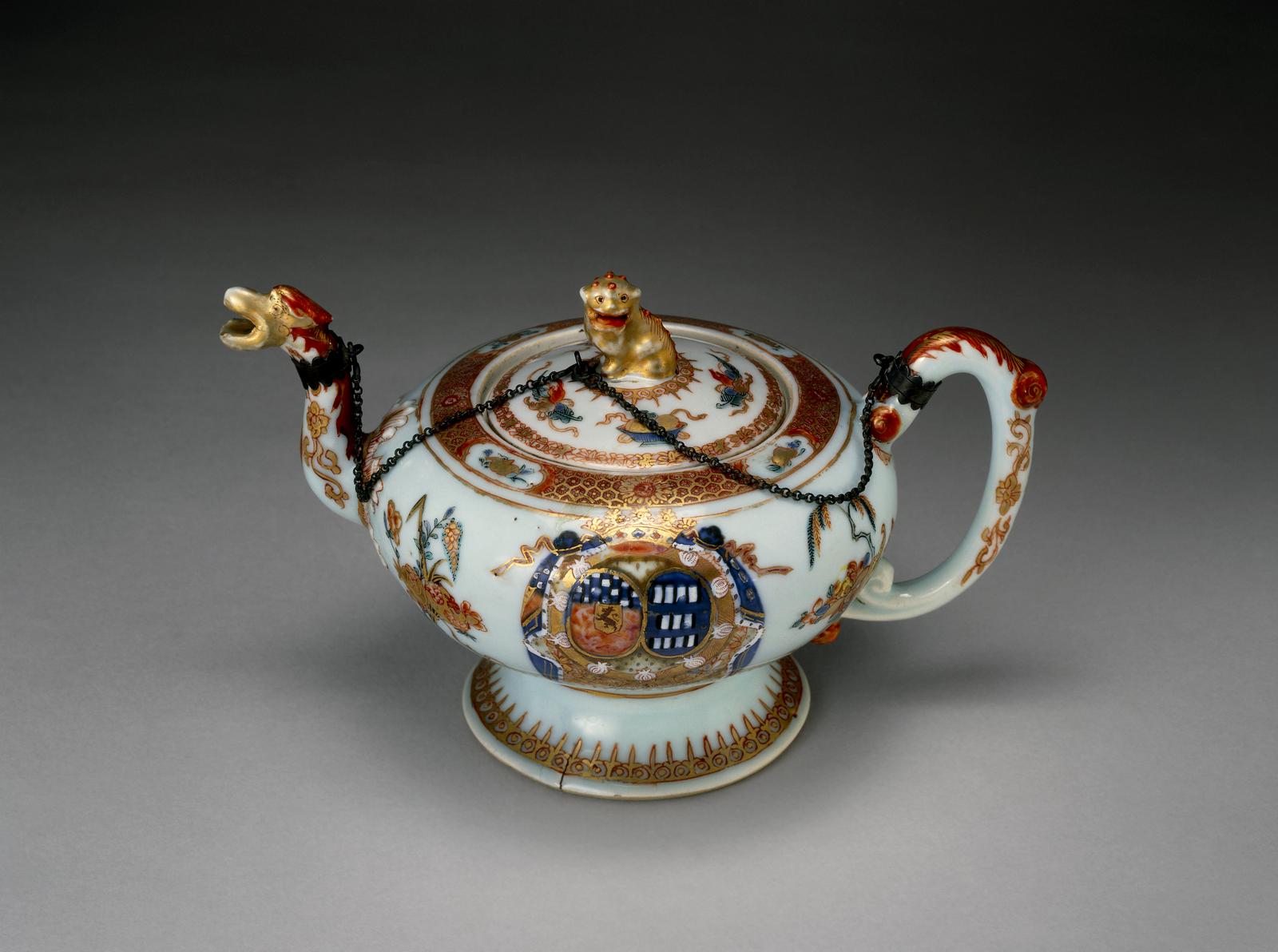Gallery:
Europe 1400-1800
Room / Case / #
46 / 15
Chinese Exports and Tea
To complete the examples of Qing Dynasty export china this ‘famille rose’ teapot has the French coat of arms of Duc de Chaulnes.
This colour scheme went out of fashion early in the Yongzheng period (1723-35) and was replaced by a proper ‘famille rose’ palette with rose-pink dominating over iron-red. The pink colour comes from tiny amounts of fine gold powder suspended in the glaze. The shape of this teapot derives from European silverware. The cover is fastened to the spout and the handle with a silver chain, added in Europe. This teapot was made between 1720 and 1725 and is 19cm in width. Probably big enough for 8 cups of refreshing black tea.
In 1712 the French Jesuit Francois Xavier d’Entrecolles who was working in Jingdezhen, the porcelain capital of China, sent two letters back detailing the secrets of Chinese porcelain to his sponsor in Paris who had them published in a Jesuit journal, leading to the setting up of the Sevres factory. A case of Europe acquiring Chinese Intellectual Capital. His letters arrived just two years after two Germans worked out how to produce porcelain and set up the Meissen factory.
The soup bowl for Britain, the jar for Russia, and the tea pot for France indicate the whole of Europe was an export market for the Chinese in the 18th C.
